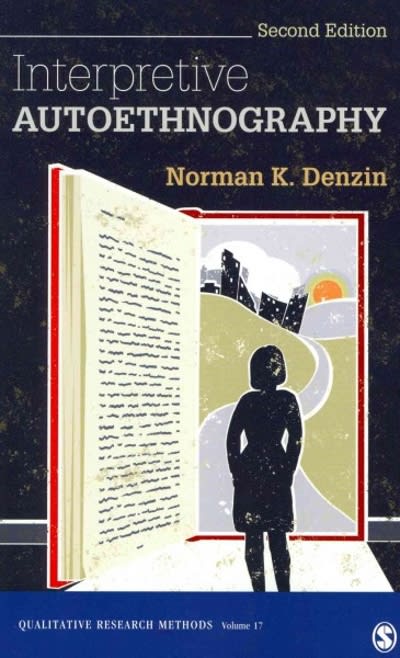Question
1) What is the difference between descriptive and inferential statistics? Give an example of each. 2) What two types of errors can be made during
1) What is the difference between descriptive and inferential statistics? Give an example of each. 2) What two types of errors can be made during hypothesis testing? Describe how each error is made. These errors are inversely related; what does that mean? Explain. 3) Suppose a study had been conducted to compare adolescent boys and girls on their dating experiences. One hundred 16-year-olds reported the number of times they had romantic involvement with someone else in the past 9 months, where romantic involvement was operationally defined as sexual contact of any sort and/or dating. Boys reported a mean number of 30 incidents, and girls reported a mean number of 20 incidents. A statistical test was conducted to compare incident scores for the groups. a) What is the null hypothesis for this study? b) What is the alternative hypothesis? c) What is/are the Independent variable(s) and levels? Also, identify the type of IV (i.e. presence/absence, type, amount) and design (i.e., bivalent, multivalent, factorial). d) What is the Dependent variable? How was it measured? e) Suppose the statistical test gave a p value of .03. Assuming (alpha) = .05, what decision should be made with regard to the null hypothesis? What should be concluded regarding adolescent dating? 4) A researcher wants to know if connecting a smell to studied information aids memory. Participants are asked to study a list of words. For one group, a distinctive smell (overpowering perfume) was presented with each word. For another group, a subtle smell (lavender candle) was presented with each word. For the last group, no smell was presented with the words. It was found that the group that received the subtle smell recalled 80% of the words, the group without the smell recalled 75% of the words, and the group that received the distinctive smell recalled 71% of the words. A statistical test was conducted to compare the number of words recalled for the groups. a) What is the null hypothesis for this study? b) What is the alternative hypothesis? c) What is/are the Independent variable(s) and levels? Also, identify the type of IV (i.e. presence/absence, type, amount) and design (i.e., bivalent, multivalent, factorial). d) What is the Dependent variable? How was it measured? e) Suppose the statistical test gave a p value of .06. Assuming (alpha) = .05, what decision should be made with regard to the null hypothesis? What should be concluded regarding smell and memory?
Step by Step Solution
There are 3 Steps involved in it
Step: 1

Get Instant Access to Expert-Tailored Solutions
See step-by-step solutions with expert insights and AI powered tools for academic success
Step: 2

Step: 3

Ace Your Homework with AI
Get the answers you need in no time with our AI-driven, step-by-step assistance
Get Started


